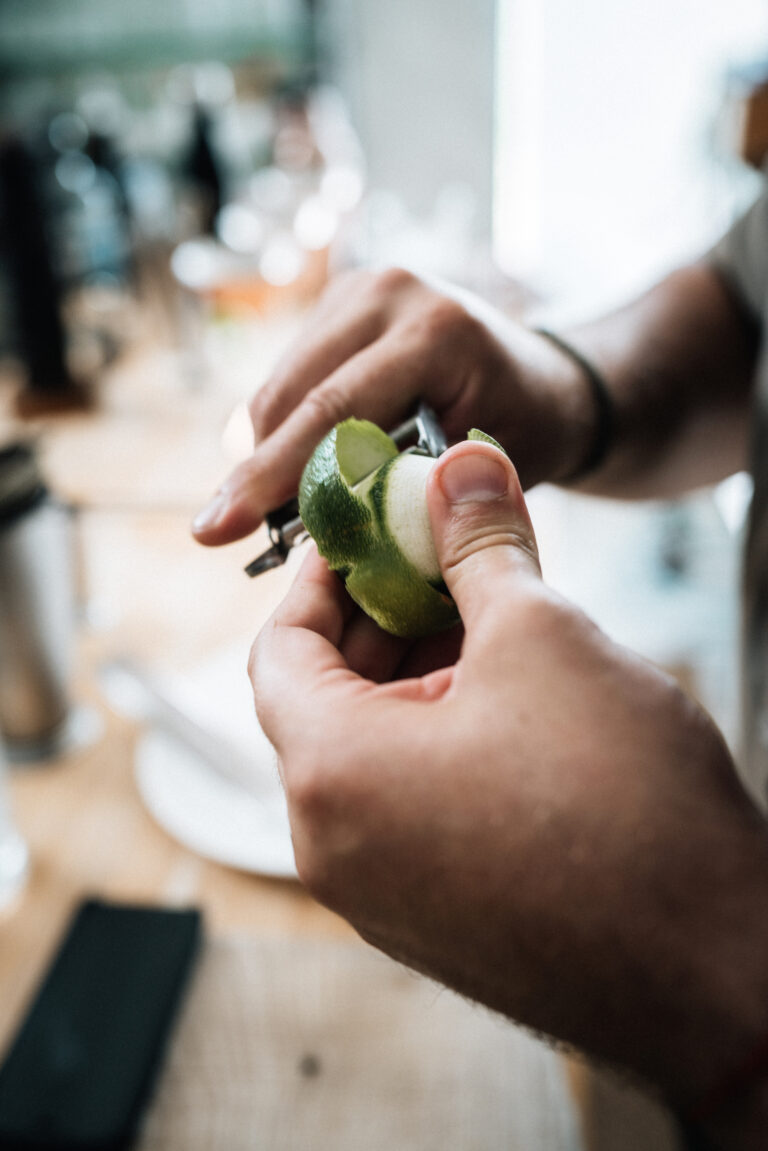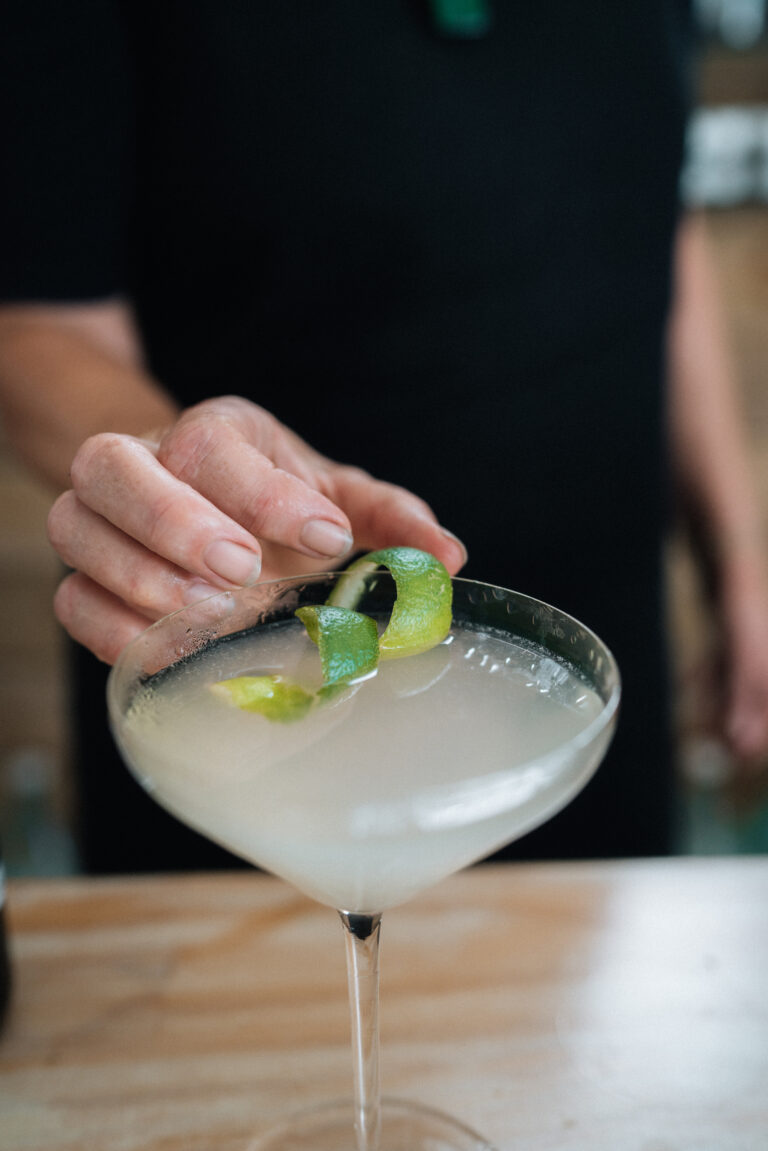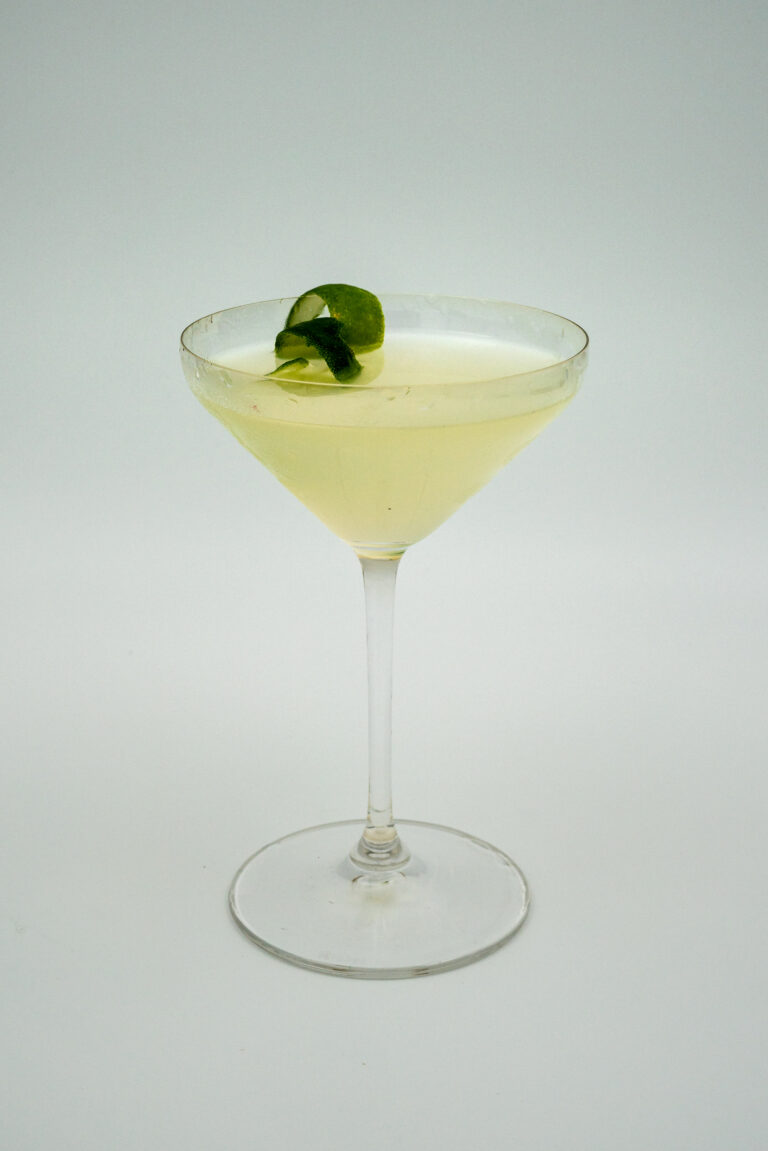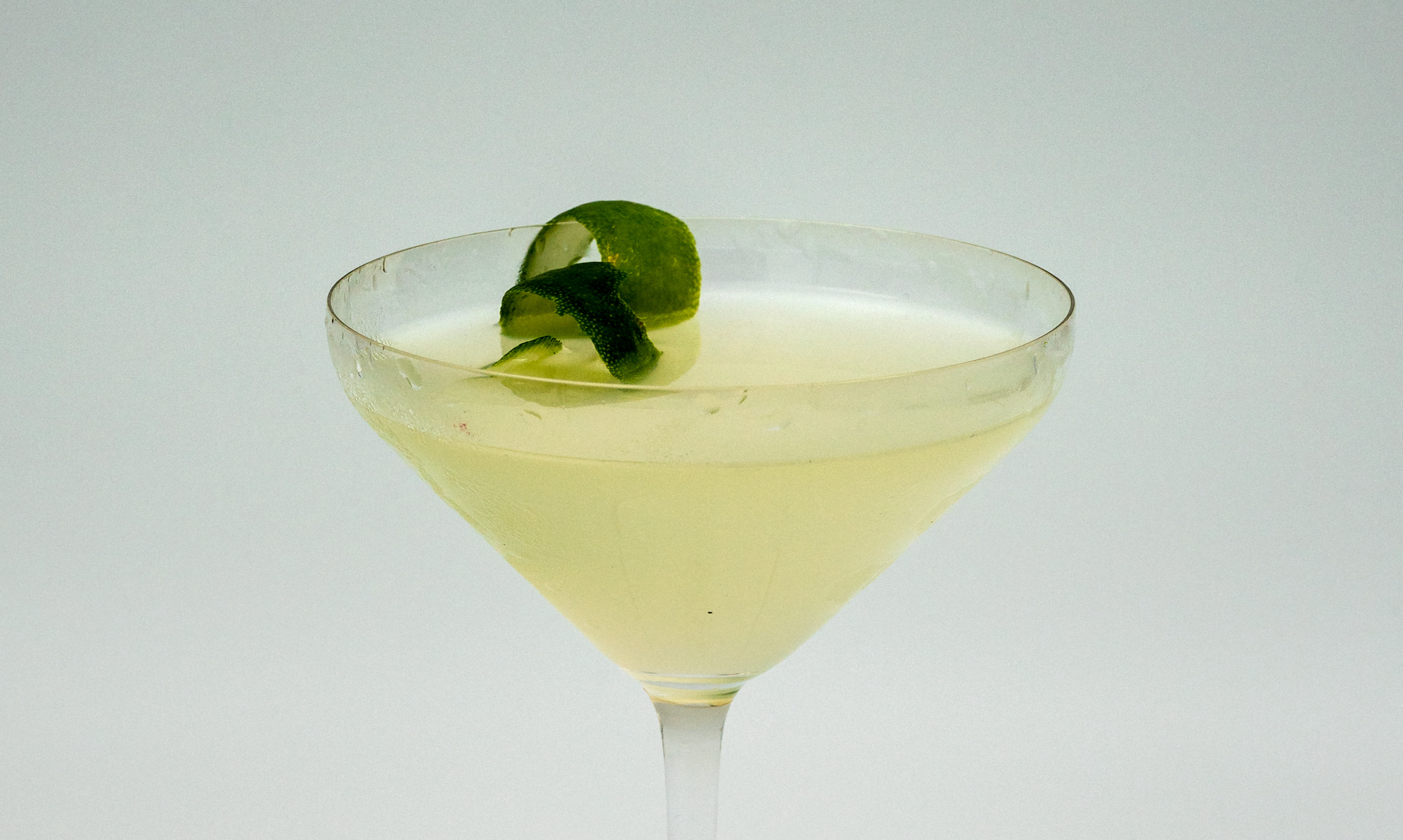Aromatic hydrosols are incredibly versatile—a fact many people don’t appreciate until they start making and working with them.
One of our favourite uses for hydrosol is creating new botanical spirits and cocktails. The best zero ABV drinks have depth, complexity, and a really pleasurable mouthfeel. A challenge we really enjoy.
The Alembics Lab Botanical Martini
Just like a classic martini, we mix this drink with a botanical spirit, a botanical vermouth, olives and citrus peel—shaken with ice and poured into chilled glasses. You can choose your starring hydrosol and tweak it by using different citrus and garnishes. This month we’re working with NZ native, kawakawa—a fantastic hyrdosol to use for botanical martinis. Here’s how we make the main ingredients and put it all together:
Kawakawa, Ginger and Lemon Botanical Martini Recipe
- 6 lemons
- 1 cup organic sugar (or honey)
- A handful of freshly grated ginger
- ½ tsp of bruised fennel seeds (and if you have them) ½ tsp celery seeds
- Kelp salt (available at good food stores)
- Kawakawa hydrosol
- Botanical vermouth (recipe below)
- Ice
- Fat green olives and citrus peel to garnish
Method: The botanical spirit (kawakawa hydrosol)
We often use our kawakawa hydrosol in place of a spirit for a botanical martini. It has a subtle but definitive aroma which is difficult to place. It creates a bit of mystery. The hydrosol is quite saturated with constituents that are not quite sure if they want to be fully miscible in water or not. This gives the hydrosol a slightly creamy look and mouthfeel with a little bite on the finish due to its peppery, spicy character. If you want to learn how to distil hydrosol you can learn all about it in our Foundation Course.
Method: The botanical vermouth (herbal citrus syrup)
- Peel 6 lemons and place the peel in a mortar and pestle (or blender).
- Add 1/cup of organic sugar or honey
- Muddle with your pestle (or blend) until the zest is running into the sugar
- Now add a handful of fresh ginger and muddle again
- Add the fennel, celery seeds and kelp salt and muddle again.
- Juice your lemons—add and mix
- Leave overnight in the fridge.
The next day, strain through a fine strainer and check the taste. You are aiming for a sharp citrus-sour, with sweet, herbal and salty minerality. If too sweet, add more lemon juice, if too tart add some sugar syrup.
The acid of the lemon zest and juice melts the sugar. It becomes a thick, concentrated syrup. You can add a little water to make it a smoother consistency if you like. Because it hasn’t had any heat applied, it tastes fresh and zingy and all those vitamins stay intact. It’s rich in antioxidants and limonene—a terpene present in the citrus peels of fruit. And of course vitamin C.
To make the martini
- Put the martini glasses in the freezer to chill
- Fill a shaker or beaker with ice
- Pour on 30ml of hydrosol and 50ml of the herbal citrus ‘vermouth’ per person.
- Take the chilled glasses out of the freezer.
- Place 2 green olives in the glass with a twist of lime or lemon peel.
- Stir, shake or muddle the martini mix and pour through a sieve into the glass.
- You may top up with soda or water if you want more fizz.
Enjoy–and don’t forget to eat the peel!







I’ve had one of your stills for a number of years & always looking for new ways of utilising it. The recipe you’ve given using kawakawa look very interesting & I’ll definitely give it a go.
I also have a Seville orange tree, some good ideas in your article there too. Love the free recipes & plant info.
You’re so welcome! We will keep posting more. And feel free to share anything you particularly love—or anything you’d like us to investigate, we love a challenge.